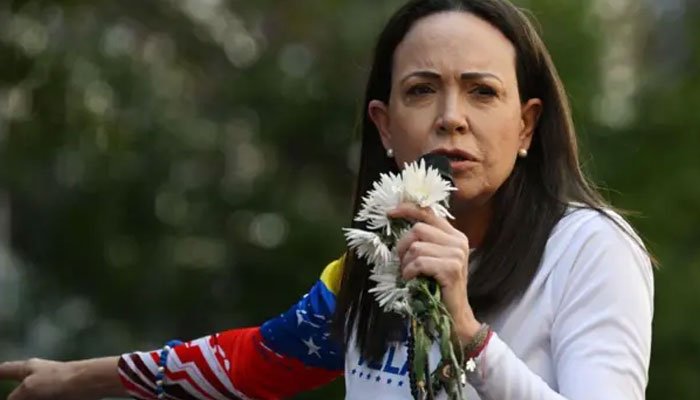Hasina’s flight landed at the Hindon Airbase near Delhi, and as per Indian media, she is currently at a safe house at the airbase and will remain there for the time being.
DHAKA: Jubilant crowds stormed unopposed into the Ganabhaban, the official residence of the Prime Minister of Bangladesh, carrying out looted furniture, TVs, and many more after ousting Sheikh Hasina after 2o years in power on August 5, Monday.
The month-long protests over the government’s job quota policy quickly grew into a national movement against former PM Sheikh Hasina. Hundreds of thousands of people engulfed the streets of Dhaka on Monday demanding her resignation.
The government tried to stop protestors with a curfew, an internet blackout, and a violent police crackdown but they said they wouldn’t stop until Hasina stepped down.
45 Minutes to Resign
Following the strong backlash on streets across the country on Monday, the Awami League, Hasina’s party alleged that Bangladesh’s Army gave Hasina just 45 minutes to resign and flee the country.
According to the Dhaka-based newspaper Prothom Alo, she insisted on using brute force until only 45 minutes before her departure; no amount of pleading from her aides and officials could persuade her to relent.
Top security officials spoke to Hasina’s sister Sheikh Rehana to convince her that that it would no longer be possible for the situation to be controlled by force. Sheikh Rehana then talked to Sheikh Hasina, but she was determined to hold on to power, Prothom Alo said.
According to the newspaper, Sajeeb Wazed Joy, PM Hasina’s son spoke to her on the phone and convinced her upon which Sheikh Hasina agreed to resign. She then wanted to record a speech addressed to the nation.
Bangladeshi media, citing a member of the international committee of Awami League, reported that Army Chief General Wakar Uz Zaman did not grant her that opportunity. “It would take 45 minutes for the demonstrators to reach Ganabhaban. There may not be enough time to record a speech,” she was told.
According to local media, at around 1:30 pm, Hasina’s security team told her that she must leave Ganabhaban, her hugely fortified palace in central Dhaka.
Immediately, the security team took Sheikh Hasina and Sheikh Rehana to the old Tejgaon Airport in Dhaka. In the meantime, a crowd started gathering in the Sher-e-Bangla Nagar area of Dhaka where the official residence of the Prime Minister and the National Parliament House is located.
According to the Prothom Alo, Sheikh Hasina carried out her resignation formalities there, and at around 2:30om Sheikh Hasina and her younger sister boarded a military helicopter and fled the country for India.
India Today, citing sources said that a meeting of the army’s National Security Council was held at around 1 pm on Sunday and the Army had told Hasina that they wouldn’t stop the students during their march on Monday.
The situation was fine till 9 am on Monday, after which, thousands of students entered Dhaka from the Gazipur border. The situation then escalated, following which the Army gave Sheikh Hasina 45 minutes to leave the country, sources said.
More From FactFile: Bangladesh Army takes ‘interim charge’ of country after Hasina resigned
Hasina’s flight landed at the Hindon Airbase near Delhi, and as per Indian media, she is currently at a safe house at the airbase and will remain there for the time being.
Army Consults for Interim Setup
After her resignation, Army chief General Waker-Uz-Zaman in a presser said he had held talks with leaders of major political parties – excluding Hasina’s long-ruling Awami League – to discuss the way ahead and was due to hold talks with the president, Mohammed Shahabuddin.
An interim government will hold elections as soon as possible after consulting all parties and stakeholders, President Shahabuddin said in a televised address late on Monday.
He also said that it was “unanimously decided” to immediately release the opposition Bangladesh Nationalist Party (BNP) chairperson and Hasina’s nemesis, Begum Khaleda Zia, who was convicted in a graft case in 2018 but moved to a hospital a year later as her health deteriorated. She has denied the charges against her.
Bangladesh witnessed extreme violence on August 4 with 97 deaths including policemen, as protesters marched to Dhaka. About 300 were killed in the initial demonstrations, and more than a thousand were injured, many of whom were denied medical care and are missing, according to the United Nations.
Nearly 10,000 people have reportedly been detained on charges of involvement in clashes and destruction of government property.
Last month, Bangladesh’s supreme court scrapped most of the quotas and ordered 93 percent of the government jobs to be allocated on merit. But the protests continued, reflecting broader frustrations about the economy, corruption, and the authoritarian turn under Hasina’s government.





